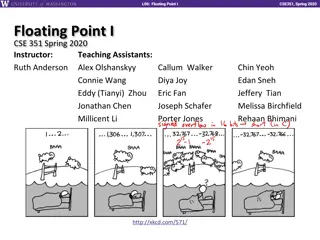
Perceptual Sets in Psychology
Explore the concept of perceptual sets in psychology, which refer to predispositions influencing how we perceive and interpret the world. Discover how past experiences, motivations, and expectations shape our perceptual sets, impacting our views and responses to the environment.
Download Presentation

Please find below an Image/Link to download the presentation.
The content on the website is provided AS IS for your information and personal use only. It may not be sold, licensed, or shared on other websites without obtaining consent from the author. If you encounter any issues during the download, it is possible that the publisher has removed the file from their server.
You are allowed to download the files provided on this website for personal or commercial use, subject to the condition that they are used lawfully. All files are the property of their respective owners.
The content on the website is provided AS IS for your information and personal use only. It may not be sold, licensed, or shared on other websites without obtaining consent from the author.
E N D
Presentation Transcript
B.A. PART I (H) 16 APRIL 2020 KUMARI RANJEETA GUEST FACULTY M. L. ARYA COLLEGE, DEPTT. OF PSYCHOLOGY E-mail- bkranjeeta@gmail.com Mb. No.- 8969020842
16 APRIL 2020 B.A. PART I (H) PAPER I, UNIT III, ATTENTIONAL AND PERCEPTUAL PROCESS ROLE OF PAST EXPERIENCE AND MOTIVATION IN PERCEPTION A perceptual set refers to a predisposition to perceive things in a certain way. In other words, we often tend to notice only certain aspects of an object or situation while ignoring other details. What Is a Perceptual Set? When it comes to our perceptions of the world around us, you might assume that what you see is what you get. However, in truth, research shows that the way you see the world is heavily influenced (and biased) by your own past experiences, expectations, motivations, beliefs, emotions and even your culture
16 APRIL 2020 B.A. PART I (H) PAPER I, UNIT III, ATTENTIONAL AND PERCEPTUAL PROCESS In Psychology, this is what is known as a perceptual set. A perceptual set is basically a tendency to view things only in a certain way. Perceptual sets can impact how we interpret and respond to the world around us and can be influenced by a number of different factors. "Perception can also be influenced by an individual's expectations, motives, and interests. The term perceptual set refers to the tendency to perceive objects or situations from a particular frame of reference," explain author Sandra Hockenbury the textbook Discovering Psychology.
16 APRIL 2020 B.A. PART I (H) PAPER I, UNIT III, ATTENTIONAL AND PERCEPTUAL PROCESS Sometimes, perceptual sets can be helpful. They often lead us to make fairly accurate conclusions about what exists in the world around us. In cases where we find ourselves wrong, we often develop new perceptual sets that are more accurate. However, sometimes our perceptual sets can lead us astray. If you have a strong interest in military aircraft, for example, an odd cloud formation in the distance might be interpreted as a fleet of fighter jets. In one experiment that illustrates this tendency, participants were presented with different non-words, such as sael.
16 APRIL 2020 B.A. PART I (H) PAPER I, UNIT III, ATTENTIONAL AND PERCEPTUAL PROCESS Those who were told that they would be reading boating- related words read the word as "sail," while those who were told to expect animal-related words read it as "seal. A perceptual set is a good example of what is known as top- down processing. In top-down processing, perceptions begin with the most general and move toward the more specific. Such perceptions are heavily influenced by expectations and prior knowledge.If we expect something to appear in a certain way, we are more likely to perceive it according to our expectations.
16 APRIL 2020 B.A. PART I (H) PAPER I, UNIT III, ATTENTIONAL AND PERCEPTUAL PROCESS Existing schemas, mental frameworks, and concepts often guide perceptual sets. For example, people have a strong schema for faces, making it easier to recognize familiar human faces in the world around us. It also means that when we look at an ambiguous image, we are more likely to see it as a face than some other type of object. Researchers have also found that when multiple items appear in a single visual scene, perceptual sets will often lead people to miss additional items after locating the first one. For example, airport security officers might be likely to spot a water bottle in a bag but then miss that the bag also contains a firearm.


















